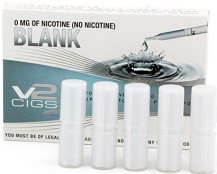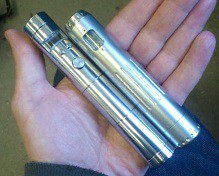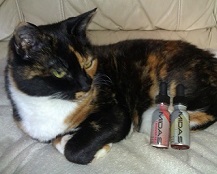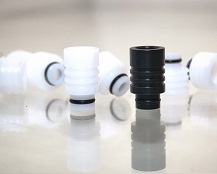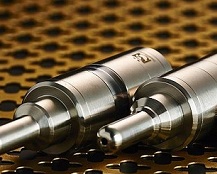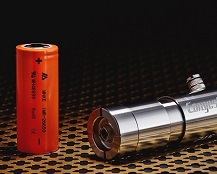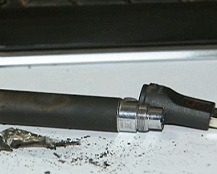For a regular smoker, the concept of refillable electronic cigarettes is really attractive. They consist of a battery, a cartridge (atomizer) and a liquid containing nicotine. However, you need to know all about these devices before you actually use them.
If you have been smoking cigarettes for a long time, you’re most likely suffering from the many diseases and side effects that come with smoking and you must be seeking a safer alternative that can help you quit smoking.
E-cigarettes have been hailed by many as a safer alternative to tobacco smoking, but a persistent problem still dogs users of the vast majority of e-cig brands. E-cigarettes use a nicotine-infused solution to produce vapor, and this can occasionally leak out of the mouthpiece and give users a hit of bitter-tasting liquid.
The supposed dangers of e-cigarette are sadly amongst the most commonly-reported aspects of the innovative technology. However, this isn't the whole story. The omissions in media and FDA reports into e-cigarettes have led many people to ask the question: are e-cigarettes dangerous? The notion that they’re dangerous is on extremely shaky ground, and when compared to tobacco cigarettes they are virtually angelic.
One of the most commonly cited arguments against electronic cigarettes is that “there is no way of knowing what’s inside them.” Shocking as it may sound; you can rest assured that is far from true. Consumer safety regulations protect people from dangerous substances, and most respectable manufacturers send their products for third-party testing to further verify their safety for consumption. In comparison to tobacco smoke, which has at least 5,000 chemicals (the actual figure is unknown), electronic cigarettes have a clear advantage because they only contain a handful of chemicals.
If you’re new to the world of electronic cigarettes, navigating through the different options and arriving at the right product for you can seem like an overwhelming process. There are a plethora of options available and new e-cigs are surfacing onto the market each week, so there is a lot of competition. Looking through reviews is the best method of finding the right e-cigarette, but you’ll still need to know what to keep an eye out to get the right one for your specific needs. This guide will help you think about what you’re looking for in an electronic cigarette and make your choice.
E-cigarettes are a relatively new technology, and many users are unsure of exactly how an e-cig works. You might have no idea what a cartomizer is, what you would do with e-liquid or even how the e-cigarette makes vapor in the first place. Finding out the answers to the basic questions regarding e-cigs gives you an idea of how the technology works, why it has a reputation of being so safe and why you’re allowed to use them in most non-smoking areas. Welcome to the world of vaping.
You’re probably noticing more and more of these as their popularity increases. They are the luxury and sports car versions of electronic cigarettes with names like Provari, Tesla and Vamo. Resembling something closer to a light saber than an e-cigarette, advanced personal vaporizers, or APVs, are turning vaping into an intricate hobby for heavy users. With all due respect for 510 “mini” e-cigs, there’s a vast world of customization beyond the standard starter kits so we thought we’d offer some insight for those of you interested in stepping up your vape game.
Rebuildable atomizers are meant for advanced users. As the name suggests, the user must rebuild their wicks on regular basis. There are several types of advanced rebuildable atomizers but we will break it down into 3 common types: tank or genesis style, dripping, and a third type which I like to call the hybrid.
The myriad potential benefits of electronic cigarettes are leading more and more smokers to make the switch every day. The only problem is that e-cigs are essentially still a brand new technology, and it’s easy to feel out of your depth when you’re first considering the different brands and the various options.
Vaping is all about Ohm’s Law. When you move into the realms of APVs, where the atomizer resistance and voltage are both often variable, the weird-looking equations actually pretty much determine how powerful your hit of vapor is.
Although propylene glycol (PG) is generally recognized as safe for humans and most pets, cats actually have a unique sensitivity to the chemical.
Nobody wants burned or blistered lips from vaping, and there are many options for things like heat-resistant drip tips to protect you against the risk.
Your wick is the part of your e-cig most likely to contaminate your vapor, so learning about preparation and general wick safety is vital for any rebuilders.
Electronic mods have in-built safety features, but mechanical mods depend entirely on you, so taking some extra steps to stay safe is absolutely vital.
If you’re getting into rebuildable atomizers, learning about safe rebuilding and minimizing the risk of shorts helps you protect yourself and your battery.
If you ask for too much current from your battery – and your mod doesn’t have a safety cut-off – it could lead to disaster. That’s why vapers need Ohm’s law.
Thermal runaway is a possibility with any lithium-based battery, but learning how to minimize the risk helps you stay safe in the world of e-cig mods.
Mixing your own e-liquids saves money, but opens you up to additional risks. Before you get into DIY mixing, make sure you’re well aware of the safety concerns.
Some e-liquids melt right through polycarbonate tanks. Learning which liquids are affected and how to prevent a disaster is essential for flavor-loving vapers.

